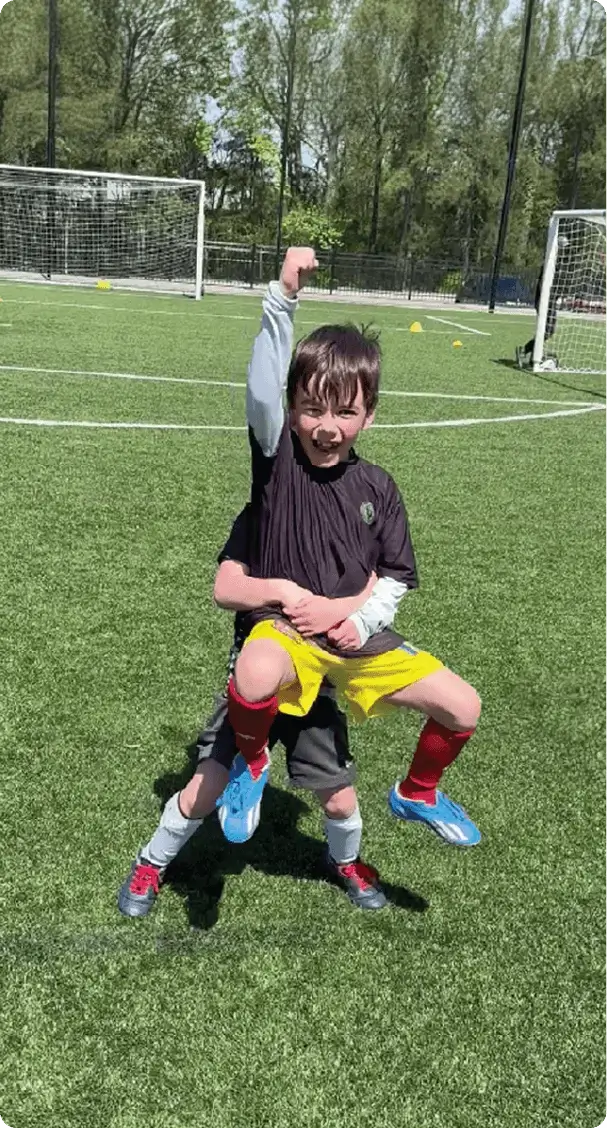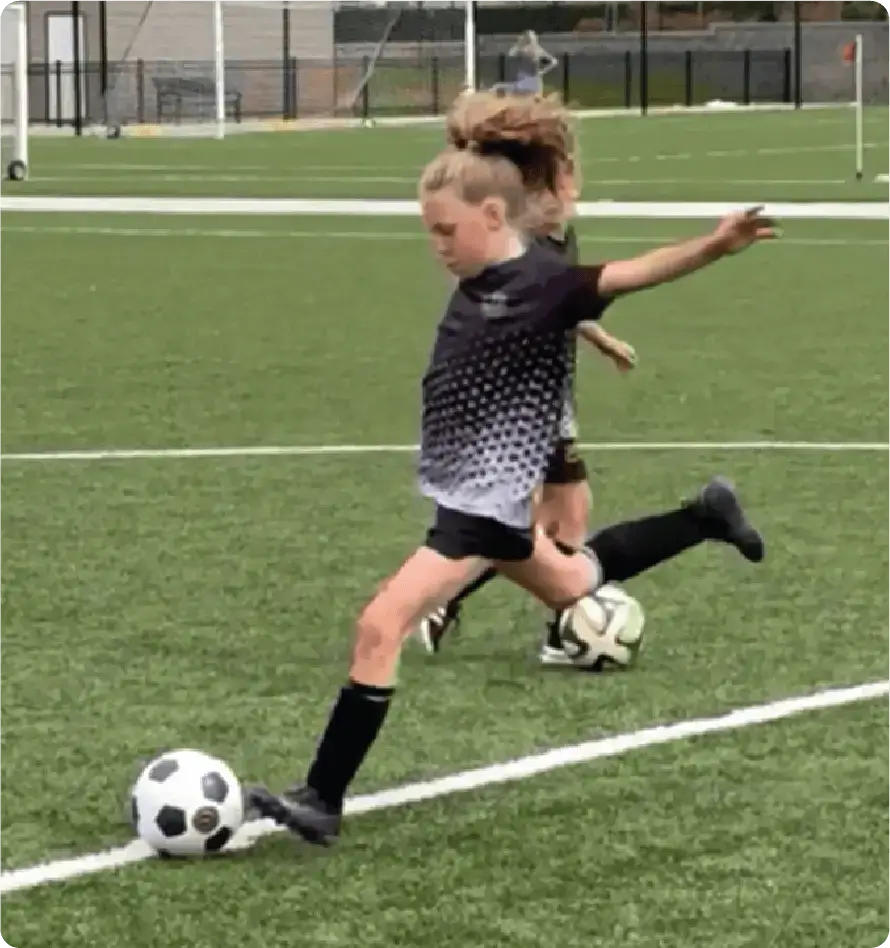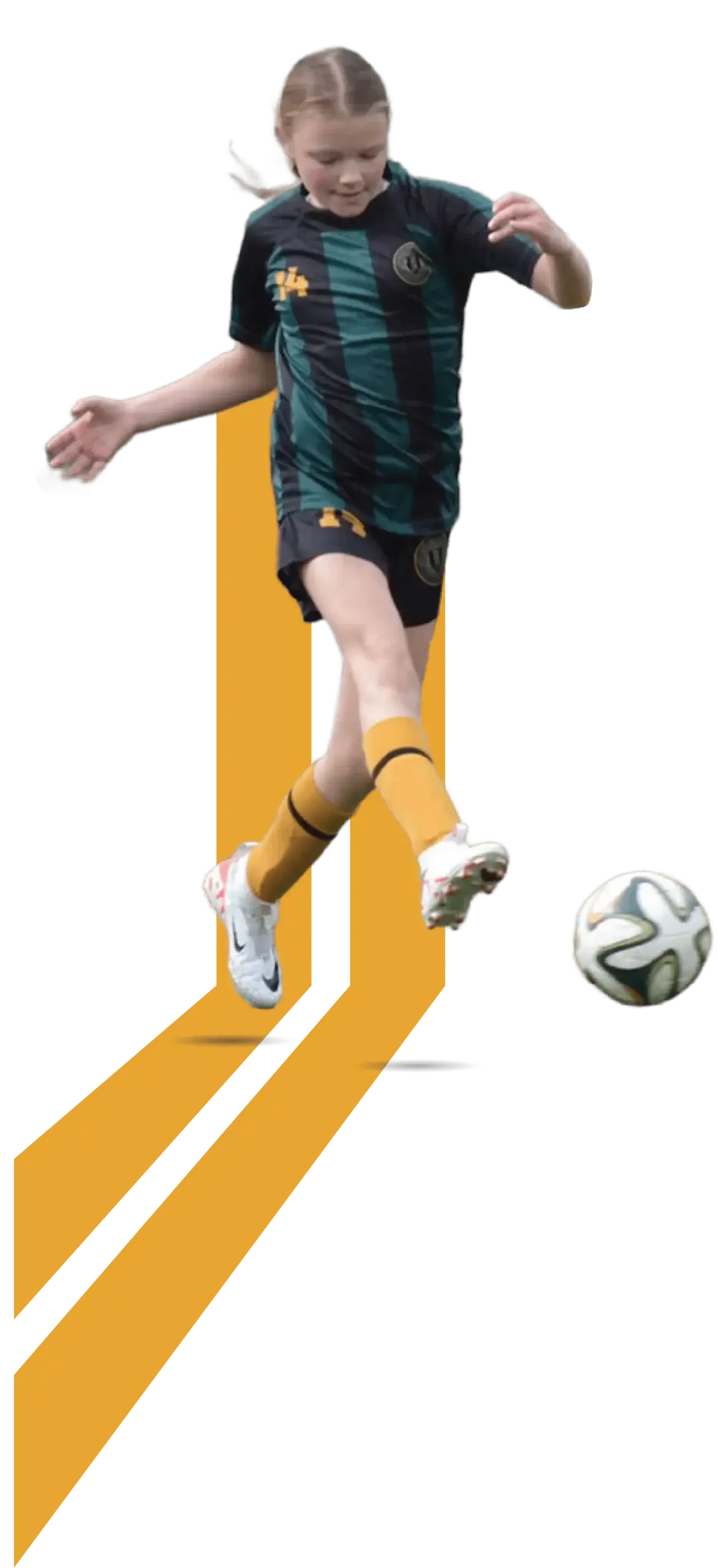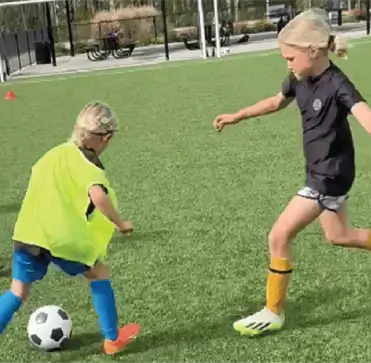CRFC
NEWSLETTERS
NEWSLETTERS FOR OUR LATEST EVENTS
In the world of youth soccer, where the traditional and the predictable often dominate, Charlotte Rise FC is changing this pattern. After spending a week observing 11 games across various age brackets, from U10 to U15, at three different tournaments, the differences in coaching philosophy and tactical execution between Charlotte Rise and the broader youth soccer community couldn’t be starker.

The Status Quo: A Landscape of Tactical Timidity
Across the fields, a pattern emerged: a widespread adherence to rigid positional play and a glaring absence of effective pressure on the ball. Teams operated within the confines of an outdated tactical playbook, where players were pigeonholed into static roles with little room for creativity or fluidity. This approach not only undermines the development of young talents but also saps the joy and dynamism that should define the game at every level. Moreover, the reluctance to employ high-pressing tactics and the lack of clear leadership within teams highlighted a tactical conservatism that is all too common in youth soccer.
Traditional Tactics: A Misguided Approach
A prevalent trend observed over the week was the emulation of professional-level strategies without due consideration for the unique context of the youth game. Coaches, with well-intentioned ambitions, were consistently placing their teams in professional-type formations that would be implemented if trying to protect the entire pitch. This approach overlooks a critical aspect: the capacity of young players to exploit these open spaces is very unlikely. There are very few to no 40-yard switches in any of these games. The far side is not that vulnerable. Teams’ defenses should overload the ball to a much higher extent. If a long switch were to occur recovery is likely. In the professional ranks, they would punish this to a far greater extent.


Goal Kicks: A Tactical Microcosm
Take, for example, the routine goal kick—a moment in the game that succinctly encapsulates the tactical disparities between youth and professional soccer. At the professional level, a goal kick can swiftly transition into a high-stakes counter-attack, where teams can be easily punished for not leveraging the full width of the pitch and executing precise, long-range passes to bypass the press. Professional teams must try to stay balanced and press as a team. They must be constantly worried about a 50-yard switch of play to create instantaneous overload and goal-scoring opportunities.
Conversely, in youth games, such a sophisticated level of play is rare. When defending goal kicks, many teams defaulted to a surprisingly rigid structure, with players retreating to traditional positions and leaving vast swaths of space unchallenged. This conservative approach essentially concedes possession and the initiative to the opposing team, missing a prime opportunity to apply pressure and regain the ball in advantageous positions. Once the ball is played short in most instances the ball does not cross back in front of the goal. Most of the time the ball is rarely played even forward toward the center. If we had a nickel for each time a coach and fans yelled “Not in the middle” after the goal kick-started, we would have made some cash. Teams do not take advantage. Most migrate back to a spot on the field corresponding to a position. The opposite half needs to get involved. Let’s go. Hard to watch, to be honest.
The Charlotte Rise FC Difference
Charlotte Rise FC eschews these tactics, recognizing that the youth game demands a different approach—one that is adapted to the developmental stage of the players and the strategic nuances of youth soccer.
Rethinking Goal Kicks
At Charlotte Rise, the strategy around goal kicks is emblematic of our broader tactical philosophy. Instead of retreating, we advocate for a more aggressive posture. We will place all our players not only behind the ball but in front of the ball. All of our players will be across the center of the field, 10 feet inside the halfway line with a player on the end line. Let’s see what happens. Play short the opposite way? Or punt long? We will adjust from this stance rather than slow migration to perceived positions. Oh, and we might have the keeper high up the pitch playing sweeper.
Fluid Positional Play and Pressure
Beyond goal kicks, our tactical ethos permeates every aspect of the game. Rejecting the rigidity of assigned positions, Charlotte Rise promotes fluidity, encouraging players to adapt to the game’s flow and seize opportunities to press and regain possession. This dynamic approach challenges the opposition in ways they are seldom accustomed to, disrupting their play and creating advantageous situations for our team.
Moreover, this philosophy nurtures a higher football IQ among our players, teaching them to read the game and make intelligent decisions, rather than adhering to a prescriptive role on the pitch.
The Charlotte Rise Difference
Tactical Boldness and Fluidity
At Charlotte Rise FC, we recognize these widespread tactical shortcomings and have charted a different course—one that emphasizes high pressure, fluid positional play, and collective defensive responsibility. Our philosophy is built on the belief that youth soccer is not professional soccer or even U23 soccer.

High Pressure: The Foundation of Our Game
We reject the passive, reactive soccer that dominates the youth scene. Instead, Charlotte Rise FC employs a high-pressing strategy, designed to unsettle opponents and regain possession closer to their goal. This approach is not about reckless aggression but intelligent, coordinated team movement. It teaches our players about work rate, anticipation, and the value of concerted effort, preparing them for the tactical demands of the highest levels of soccer.
Positional Fluidity: Beyond the Rigidity
Gone are the days of rigid positional assignments at Charlotte Rise FC. Our players are encouraged to understand and interpret the game beyond the confines of a single position. This fluidity allows for a more creative, dynamic style of play, where players are comfortable operating in multiple roles and making decisions based on the flow of the game rather than a predetermined script.
Defensive Leadership: Commanding the Back
A key component of our tactical approach is the emphasis on leadership, particularly from our central defenders and goalkeepers. These players are not just tasked with defensive duties but are integral to organizing the team, directing play, and ensuring that everyone is aligned with our tactical objectives. This leadership ensures that our high-pressing game is executed effectively and that we maintain a cohesive unit, ready to transition from defense to attack. Players are coached to understand there is a leader in the ranks. This player is in control of the pressure up the field. This player controls the line in relation to midfield and keeps the proper defensive line closer to goal. It is hard for youth players to tell, demand and lead other peers. At Charlotte Rise FC we know this. Players are taught what needs to be said, when to say it, and how to say it. This is the expectation. This communication and those receiving it are taught. This is not organic. I routinely hear “more talk, more communication” from sideline coaches. What does this mean? Who should be talking? What should they say? Why would the other players listen? This is like saying “run faster or shoot with more accuracy.” I repeat at Charlotte Rise FC we will teach this dynamic daily. The What/Who/When and Why through a shared vocabulary.
Collective Responsibility: All Behind the Ball
Charlotte Rise FC teaches more than just tactics; we instill a philosophy of collective responsibility. Every player, regardless of their position, is expected to contribute defensively. This doesn’t mean retreating into our half but ensuring that, once possession is lost, we act as a unified team to regain it, reflecting our commitment to a proactive rather than reactive game.
Conclusion
Defensive Tactical Vision at Charlotte Rise FC
The contrast between Charlotte Rise FC and the wider youth soccer community is a testament to our commitment to doing things differently. We believe in developing players who are not only technically skilled but tactically intelligent. Our approach challenges the status quo, offering a more aggressive, dynamic, and enjoyable version of the game that prepares our young athletes for the complexities and demands of modern soccer. At Charlotte Rise FC, we’re not just playing the game; we’re changing it.

